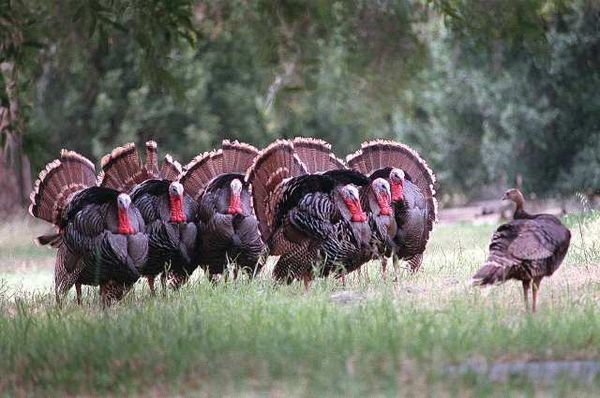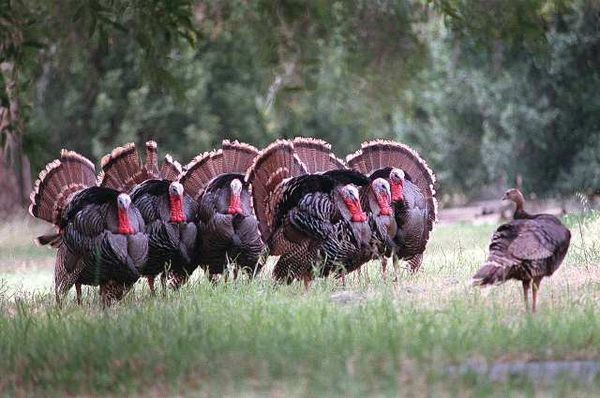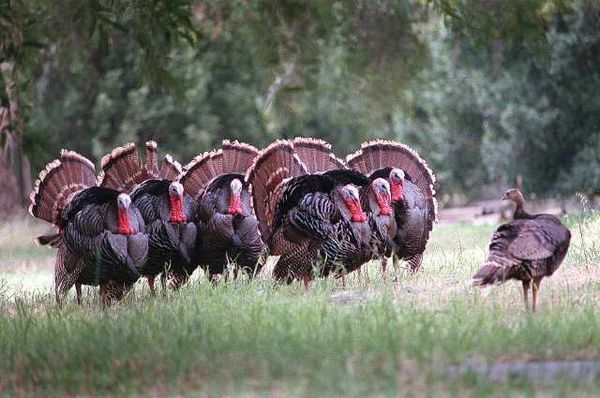By Mike Weilbacher, Executive Director
On Thursday, Americans of all shapes, sizes and colors gather around tables overflowing with colorful cornucopias of food. And whether that table includes cranberry sauce or couscous, tortellini or tortillas, the centerpiece of the meal is likely that quintessential American bird, the turkey.
Consider that turkey, one of our biggest natural neighbors. Likely one of your holiday plates includes an image of the tom turkey, chest all puffed out, strutting its stuff. That’s not how turkeys appear in November. Sleeker, thinner, turkeys are now forming winter single-sex flocks, a tom and its brothers joining a fraternal order of other males. During this first winter, the toms spar viciously and violently to establish, yes, the pecking order, and a rigorous, fiercely contested one at that. They peck, wrestle, and strike with wings, feet and head until exhausted, and he who fights longest and hardest is the winner. To him go the spoils of war: the right to mate in spring.
For when the winter flocks break up, the brothers stay together. They pick clearings in the forest to strut their stuff, gobbling and fluffing like hyperactive mummers, calling attention to themselves while attracting harems of females. The bumps atop their heads turn various shades of reds, whites and blues—they are, after all, patriotic—and their wattles flap while their snoods bounce around: they have a face only a mother—and hens—can love. And when the hens arrive, only the big brother—top of the heap—mates, top gun mating with multiple females to spread his strong genes throughout the pool.
It’s not known whether or not Pilgrims and Native Americans dined on turkey that first Thanksgiving. But the Pilgrims knew about turkeys, encountering them in England, of all places. You see, the Aztecs domesticated the Mexican subspecies around 800 B.C., and Spaniards introduced the bird to Europe, where it came to England in 1550, and by the Pilgrim’s era was the centerpiece of large feasts held by the wealthy. The turkey we eat today is still a descendant of the Mexican subspecies—not the native North American bird we see at places like Pennypack up in Huntingdon Valley.
Oh, one more turkey story. If you do go to somewhere like Pennypack searching for turkeys, the sight of these massive birds was unlikely even recently. Though turkeys had roamed a huge swath of America, with the one-two punch of overhunting and deforestation, only 30,000 turkeys gobbled across 18 states by 1900; the animal had disappeared completely from Canada, New England, New York, and agricultural states like Indiana. While Pennsylvania was the northernmost state on the East Coast to retain a wild turkey population, there were none in Philadelphia or its suburbs.
So the wild turkey almost met the same fate as the dodo and passenger pigeon. Happily, three things altered its future. Too many hunters in too many parts of the country let wildlife agencies know they valued wild turkeys. Turkey hunters are a passionate lot, and whether or not you hunt or believe in animal rights, turkeys are here, in part, because of pressure from hunters. Second, wildlife managers learned how to use relic populations of wild turkeys in captive breeding programs—and re-introduced newly hatched turkeys to their former haunts.
And finally, over the last decades, our forests have been slowly regenerating over the years, turkeys rediscovering new, viable habitat. Creatures of the edge, they crave forests for cover and nesting spots, fields and meadows for seeds and insects to eat. As their habitat returned, so did they. Today, turkeys nest in all but two Pennsylvania counties, Delaware and Philadelphia, and I wouldn’t be surprised if nesting turkeys return to my Schuylkill Center sometime soon.
The National Wild Turkey Federation now estimates some seven million turkeys range across the U.S., and National Audubon christened it one of the “10 Creatures We Saved” in its centennial celebrations a few years back.
On Thursday, as turkeys decorate our tables, be thankful for one of the too-few conservation success stories we share, the return of the wild turkey.
Happy Thanksgiving.
Naturalist Mike Weilbacher directs the Schuylkill Center and can be reached at mike@schuylkillcenter.org.


